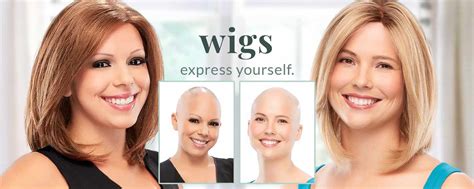Embracing Your Inner Beauty
A cancer diagnosis can be a life-altering event, impacting both your physical and emotional well-being. One of the most common side effects of cancer treatment is hair loss, which can be a particularly distressing experience for women. Wigs offer a discreet and personal solution to hair loss, restoring confidence and providing a sense of normalcy.

Types of Wigs for Breast Cancer Patients
Choosing the right wig depends on your individual needs and preferences. Here are the most common types:
- Synthetic wigs: Made of synthetic fibers, these wigs are affordable, easy to style, and require minimal maintenance.
- Human hair wigs: Made from real human hair, these wigs provide the most natural look and feel but are more expensive and require more care.
- Lace wigs: These wigs feature a lace base that creates a realistic scalp effect, providing a seamless appearance.
- Mono wigs: Mono wigs have a thin, breathable base that provides comfort and a natural hairline.
Benefits of Wigs for Breast Cancer Patients
- Improved self-esteem: Wearing a wig can boost self-image and confidence, especially during treatment when physical changes are prominent.
- Camouflage hair loss: Wigs effectively disguise hair loss caused by chemotherapy or radiation therapy.
- Protection from the elements: Wigs provide warmth and protection from the sun, wind, and cold.
- Freedom of expression: Wigs allow you to experiment with different hairstyles and colors, giving you the flexibility to express your individuality.
Choosing the Right Wig
To find the perfect wig, consider the following factors:
- Hair type: Match the texture and color of your natural hair as closely as possible.
- Head shape: Ensure the wig fits comfortably and securely without causing discomfort.
- Lifestyle: Choose a wig that fits your lifestyle and maintenance routine.
- Budget: Wigs range in price, so set a budget and explore options within your means.
Tips for Choosing a Comfortable Wig
- Look for wigs with adjustable straps or built-in combs for a secure fit.
- Choose a wig with a breathable base to prevent overheating.
- Consider wigs with soft, hypoallergenic materials to minimize irritation.
- If possible, try on the wig before purchasing to ensure a comfortable fit.
Table 1: Wig Types and Features
| Wig Type | Features |
|---|---|
| Synthetic | Affordable, easy to style, minimal maintenance |
| Human Hair | Natural look and feel, requires more care |
| Lace | Realistic scalp effect, seamless appearance |
| Mono | Thin, breathable base, natural hairline |
Table 2: Wig Considerations for Breast Cancer Patients
| Factor | Considerations |
|---|---|
| Hair Type | Match texture and color of natural hair |
| Head Shape | Ensure a secure and comfortable fit |
| Lifestyle | Choose a wig that fits your daily routine |
| Budget | Set a budget and explore options within your means |
How to Care for Your Wig
- Washing: Gently wash your wig with a mild shampoo and conditioner specifically designed for wigs.
- Detangling: Brush your wig with a soft-bristled brush or wide-toothed comb.
- Drying: Air-dry your wig or use a blow dryer on a low setting.
- Storage: Store your wig on a wig stand or in a wig box when not in use.
Tricks for Wearing a Wig with Confidence
- Secure the wig: Use bobby pins or hairspray to keep the wig in place, especially in windy conditions.
- Accessorize: Add headbands, scarves, or hats to enhance your look and conceal the wig’s hairline.
- Blend the hairline: Use powder or concealer to match the wig’s hairline to your skin tone.
- Practice: Wear your wig around the house to get comfortable and adjust it as needed.
Table 3: Wig Care Tips
| Maintenance | Tips |
|---|---|
| Washing | Use mild shampoo and conditioner |
| Detangling | Brush with soft bristles or wide-toothed comb |
| Drying | Air-dry or use low blow dryer setting |
| Storage | Store on wig stand or in wig box |
Table 4: Tricks for Wearing a Wig with Confidence
| Trick | Benefit |
|---|---|
| Secure the wig | Prevents slippage |
| Accessorize | Enhances look and conceals hairline |
| Blend the hairline | Creates a natural appearance |
| Practice | Builds confidence and ensures a comfortable fit |
Resources for Breast Cancer Patients
- American Cancer Society: https://www.cancer.org/cancer/breast-cancer.html
- National Breast Cancer Foundation: https://www.nationalbreastcancer.org/
- Susan G. Komen Foundation: https://www.komen.org/
Conclusion
Wigs can be a powerful tool for women facing hair loss due to breast cancer treatment. They offer a discrete and customizable way to restore confidence, camouflage hair loss, and provide a sense of normalcy. By following the tips and guidance in this article, you can choose and wear a wig that empowers you to embrace your inner beauty and navigate this challenging time with dignity and grace.
